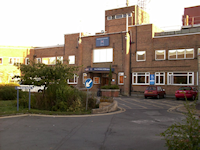Harefield Hospital History
Harefield Hospital a well renowned cardiothoracic specialist centre stands in the borough of Hillingdon, Uxbridge on the grounds of several hundred acres. It contains several buildings including the mansion, Chapel, numerous wards, dining room, nurses quarters and the house where relatives can stay close to their loved ones.
The great house
The main house a grade 2 listed building of historical and architectural interest, now known as the mansion is over 300 years old and is still said to contain Harefield’s ghost – The White Lady, John Cook’s granddaughter. This is now the building where the doctors reside this in itself has an interesting history.
On the fourth of February 1704 the house then known as The Rise standing on 170 acres was bought by John Cook as part of his son’s marriage settlement.


The Australians
In 1909 Mr Charles bought the house and surrounding land for £18,500. Around the early 1900 is the Australian Imperial Force was looking for somewhere to send their war invalids in order to recuperate and since Charles was an expatriate from New South Wales, Australia, he offered them the house at Harefield.


The sanatorium and today’s hospital
Tuberculosis being rife meant another specially controlled sanatorium had to be found for the sufferers within the County of Middlesex itself and so Harefield Park was chosen. Harefield Park being on the highest point in Middlesex meant that this would be an ideal situation for an open air treatment centre. After many renovations, the sanatorium opened in 1921.
The sanatorium was only meant to be a temporary measure, but when operations were discovered for cardiac cases a thoracic unit was opened. It was the opening of this unit which led to the decision in the late 1950s to turn Harefield into a specialist chest Hospital.
Heart surgery


The world’s first pulmonary valve factory was carried out at Harefield on the fourth of December 1947.
The intensive therapy unit was opened in 1964 and a paediatric specialist unit following shortly after. More than 100 open heart surgeries were performed between 1961 and 1969. 1969 was the year that the well renowned heart surgeon Professor Sir Magdi Yacoub came on the scene at Harefield. On the eighth of September 1973, Harefield’s first heart transplant took place. It wasn’t until the 1980s that heart transplantations really got under way, the predecessors in the 1970s, not having a very good survival rates. In 1985, the hospital transplant fund was born and has since gone from strength to strength. Britain’s first heart-lung transplant was performed by Magdi Yacoub in 1983.
A special investigation cardiology suite was opened in 1988 in memory of Eric Morecambe the comedian who was a former patient. He had been cared for in the hospital. This houses the electrocardiogram and is always in use. The electrocardiogram is a method by which electronic wires are attached to the body and cardiac movement is recorded onto a piece of paper, by way of a graph.
With recovery time getting shorter and operations getting more complex Harefield Hospital will never stop being a pioneering heart specialist centre.


